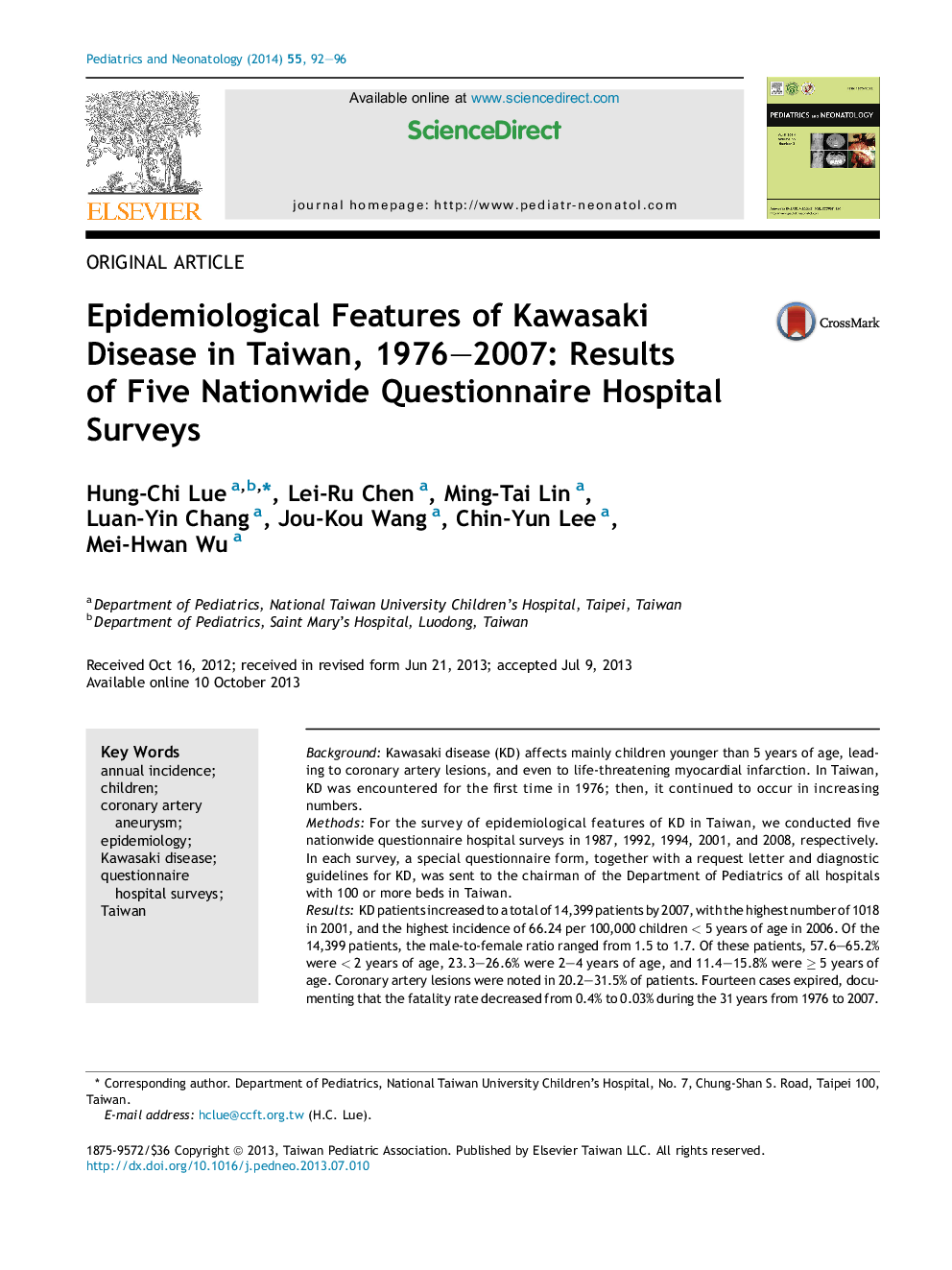| Article ID | Journal | Published Year | Pages | File Type |
|---|---|---|---|---|
| 4175331 | Pediatrics & Neonatology | 2014 | 5 Pages |
BackgroundKawasaki disease (KD) affects mainly children younger than 5 years of age, leading to coronary artery lesions, and even to life-threatening myocardial infarction. In Taiwan, KD was encountered for the first time in 1976; then, it continued to occur in increasing numbers.MethodsFor the survey of epidemiological features of KD in Taiwan, we conducted five nationwide questionnaire hospital surveys in 1987, 1992, 1994, 2001, and 2008, respectively. In each survey, a special questionnaire form, together with a request letter and diagnostic guidelines for KD, was sent to the chairman of the Department of Pediatrics of all hospitals with 100 or more beds in Taiwan.ResultsKD patients increased to a total of 14,399 patients by 2007, with the highest number of 1018 in 2001, and the highest incidence of 66.24 per 100,000 children < 5 years of age in 2006. Of the 14,399 patients, the male-to-female ratio ranged from 1.5 to 1.7. Of these patients, 57.6–65.2% were < 2 years of age, 23.3–26.6% were 2–4 years of age, and 11.4–15.8% were ≥ 5 years of age. Coronary artery lesions were noted in 20.2–31.5% of patients. Fourteen cases expired, documenting that the fatality rate decreased from 0.4% to 0.03% during the 31 years from 1976 to 2007.ConclusionIn Taiwan, KD was encountered for the first time in 1976, and it continued to occur, reaching the highest annual incidence of 66.24 per 100,000 children < 5 years of age in 2006. In Taiwan, the first emergence of KD came in 1976; the annual increment of the incidence rate was lower (2.41 in Taiwan vs. 4.17 Japan), and no significant KD outbreak was observed in Taiwan.
